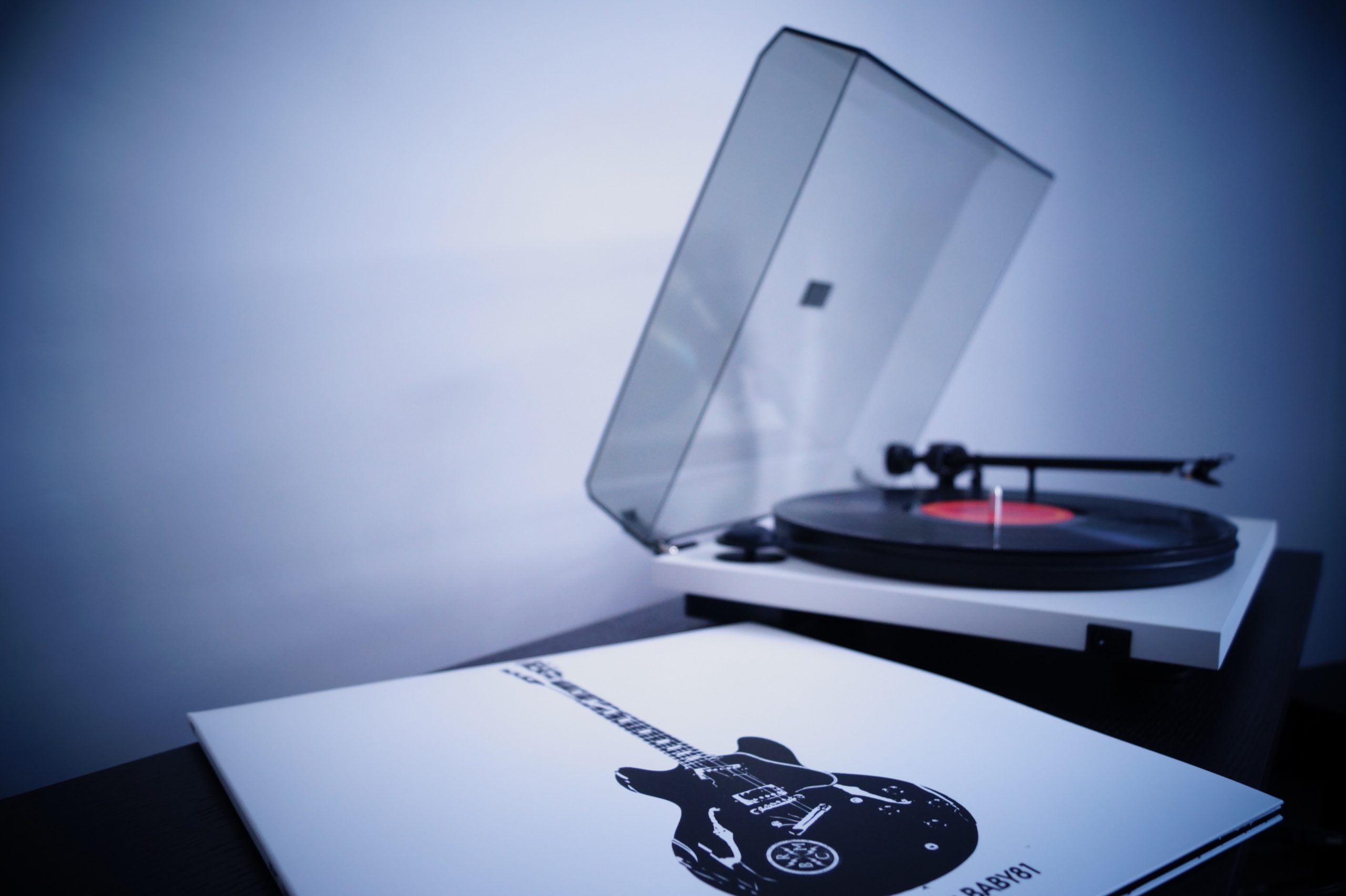EP vs Album might sound the same to you but there is a huge difference. With my experience in dealing with artists, I see a lot of artists who are struggling financially jumping straight to releasing an album instead of taking it slowly by considering an EP.
If you are consistent in the music industry then you should have listened to a series of EPs and Albums. During our internal research, we discovered that the majority of fast-rising artists don’t know when to go for an EP and why they should also consider an Album.
Below you will get complete facts about the EP and Album. You will be able to know what EP and Album are and how they are implemented in the music industry.
So let’s begin.
Unpacking These Terminologies
In the nuanced lexicon of music production, the terms ‘EP’ and ‘Album’ are not interchangeable—they are delineated by distinct characteristics that reflect the scope of a musical project. An EP, or Extended Play, traditionally comprises three to five tracks and serves as a vessel for artists to showcase a concise, yet cohesive collection of their work.
Conversely, an Album is a more substantial compilation, often emblematic of a broader artistic statement, usually consisting of at least seven tracks and signifying a more comprehensive exploration of thematic and musical concepts.
Understanding these classifications illuminates the artist’s strategic approach to their craft and sets the stage for audience engagement.
What is EP? EP Explained
An EP, or Extended Play, is a medium-length music format, longer than a single but shorter than a full-length album. Typically, it includes three to five tracks, offering artists a platform for succinct expression of their art.
The EP is often utilized by emerging artists as a strategic stepping stone, serving to establish a sonic identity without the extensive commitment of an album. For established acts, it can be a means to maintain relevance between album cycles or to experiment with new sounds.
An EP can crystallize an artist’s vision through a curated, impactful selection of tracks.
Despite its brevity, an EP’s content is meticulously crafted, creating an immersive yet concise listening experience that can stand on its merit. Whether it introduces fresh talent or showcases an alternative creative direction for veteran musicians, the EP holds a unique and significant place in an artist’s discography.
What is an Album? In-depth Definition
An album traditionally has been a collection of audio recordings issued as a single item on CD, vinyl, audio tape, or another medium. Albums often comprise a body of work that reflects a period in an artist’s creative journey.
These long-form compilations can span various genres and styles. They tell stories, convey emotions, and create a deep connection with listeners.
Historically, albums have served as an artist’s primary canvas, allowing for elaborate narratives and intricate soundscapes. They unfold over multiple tracks, typically exceeding nine or more.
Albums usually represent a significant milestone for musicians. They often involve complex production processes and a substantial amount of time to perfect and conceptualize, combining multiple musical ideas into a coherent whole.
Further, album releases can often define an artist’s career, creating legacies that resonate with audiences for generations. They encapsulate moments in time, capturing the essence of an artist’s sound during a particular era.
In essence, an album embodies an artist’s vision in its most expansive form. It serves as a comprehensive showcase, offering an immersive journey through a carefully curated collection of songs.
Historical Context Of EP and Album
The evolution of the album as a pivotal medium in music can be traced back to the advent of long-playing (LP) records in the mid-20th century.
Prior to this innovation, consumers typically engaged with music through shorter formats like the single or the 78 rpm record, which were more conducive to individual songs or small collections of tracks.
With the introduction of the LP, artists gained the capacity to construct more ambitious narratives that unfolded over the course of multiple tracks, giving rise to the concept of the album as a cohesive artistic statement.
This format can weave intricate sonic tapestries and offer more substantial content that distinguished the album and cemented its status as a cornerstone in the art of music delivery.
EPs in Music Evolution
The EP, or Extended Play, format has played a crucial role in the music industry’s development, functioning as a middle ground between a single and a full-length album. This succinct yet potent format has afforded artists the latitude to experiment with new sounds and styles within a relatively low-risk framework.
Historically, EPs have often served as a proving ground for emerging musicians, facilitating an introduction to the marketplace without the formidable investment an album demands. They have enabled artists to maintain a presence in the public’s ear, offering a taste of their evolving capabilities and a hint at the direction their artistry might take. This has often set the stage for significant full-length works that emerged thereafter.
Additionally, the EP format has been pivotal in fostering niche genres and underground scenes. By providing a channel for the distribution of music that may not conform to mainstream demands, EPs have nurtured the growth of diverse musical movements. They have become instrumental in sustaining the vibrancy of the musical landscape, ensuring a continual influx of innovative sounds.
In the streaming era, the relevance of EPs continues to flourish. Artists are leveraging the format’s brevity to engage audiences with more frequent releases, capitalizing on the listeners’ desire for new content. This strategy affords musicians the agility to respond to trends and feedback, tailoring their output to dynamic digital consumption patterns. Consequently, EPs have emerged as a flexible and strategic tool for artists navigating the complexities of today’s music industry.
Albums’ Role Over Time
Albums have been historical benchmarks in an artist’s career, reflecting artistic growth.
- They provided a complete artistic statement, encompassing an era or theme.
- Albums have often been used as a narrative arc, telling a story or exploring concepts.
- They became a primary source of commercial success for artists and labels.
- Albums served as cultural milestones, reflecting and influencing societal trends.
The evolution of music formats has seen albums survive various changing tides.
Even with the advent of digital media, albums continue to hold a place of reverence and anticipation among fans and artists alike.
Content and Length Of EP an Album
The EP, short for Extended Play, is characterized by its brevity compared to the traditional album. An EP typically consists of three to five tracks, making it longer than a single but shorter than an album. These succinct offerings can act as a teaser, showcasing an artist’s style or a preview of what is to come in a full-length album. They let artists deliver music with more substance than a single without requiring the extensive commitment of an album.
In contrast, an album is generally a more comprehensive body of work, traditionally comprising around seven tracks or more, and often stretching to ten to twelve songs. This format is designed for a more immersive experience, reflecting the artist’s vision over a longer duration. They embody a substantive narrative, whether thematic or conceptual, providing audiences with a deeper dive into the artist’s creative universe. The album’s length allows for a richer and more varied musical journey, resonating with listeners who seek out complete and elaborated artistic statements.
Track Count in EPs
An EP, or Extended Play record, typically houses a modest collection of tracks, a fact that differentiates it from the substantial tracklists found in albums.
Since the 1960s, the EP has been recognized as a middle ground between singles and full-length albums, defined not just by its shorter length but also its track count, which generally ranges from four to six songs.
Over time, the definition surrounding the specific track count for EPs has seen some flexibility, but the typical range maintains its place as an industry standard that guides artists and labels alike.
It’s essential to understand the significance of these distinctions, as they influence marketing strategies, playlist placements, and the overall narrative framework that artists construct for their projects.
While the EP format provides a succinct yet comprehensive snapshot of an artist’s style, it is the track count that often sets the foundational limits within which they express their musical tales.
Albums’ Extended Playtime
Albums offer a breadth of content.
While an EP serves as a brief musical statement, albums present a comprehensive exploration of an artist’s narrative and thematic concepts. They typically boast upwards of seven tracks, though more commonly they consist of ten to twelve tracks or more. Consequently, these larger compilations allow for a more nuanced and immersive experience, inviting listeners on a journey through a sonic landscape shaped over a greater temporal span.
Length underscores the album’s storytelling potential.
Creating an album entails compiling a substantial list of tracks – it is here where artists weave intricate sonic tapestries. By employing a variety of interludes, themes, and motifs artists can construct elaborate narratives and delve deeper into musical experimentation.
Extended playtime demands strategic composition.
Crafting an album’s tracklist necessitates thoughtful consideration of pacing and flow, ensuring listeners remain engaged from the beginning to the end. Transitional pieces, thematic arcs, and dynamic contrast are all elements that typically receive heightened attention in the album format.
Albums evolve as generational experiences.
The album’s longevity as a format reflects its ability to adapt and resonate across generations, retaining relevance as a comprehensive expression of artistic vision. It’s not unusual for landmark albums released in the early 2020s to continue influencing an entire generation’s soundscape. These enduring works showcase an artist’s ability to create a lasting impression that transcends fleeting trends, etching a permanent mark on the musical landscape.
Intention and Usage Of Album and EP
EPs tend to serve as a prelude to an artist’s capabilities, often released to generate interest before a full album. Their concise nature allows them to act as an effective showcase of an artist’s style, without demanding the investment of time and storytelling that an album requires.
In contrast, albums are constructed as comprehensive narratives, offering a full-fledged journey through an artist’s current musical and lyrical themes. They’re designed to be immersive and are often centered around a cohesive concept, providing listeners with a substantial and complete auditory experience.
Furthermore, EPs are frequently employed by emerging artists to establish a presence or by established artists to maintain relevance between album releases. They represent a strategic tool within an artist’s repertoire for engaging their audience and testing new musical directions.
EPs: Teasers and Testers
EPs often act as a tantalizing glimpse into an artist’s evolving sound, hinting at future directions. They foster curiosity and sustain interest in the audience, setting a stage for upcoming full-length projects.
Since their inception, these bite-sized releases have evolved from mere samplers to important strategic assets. Benefit-laden, they provide a platform to experiment with new styles and gauge listener reaction, without the stakes attached to an album.
Artists deploy EPs not only to introduce new material but also to satiate fans during long waits between albums. These compact offerings can maintain a buzz, delivering enough content to appease and yet leave listeners clamoring for more.
As a testing ground, EPs afford musicians the flexibility to explore unexpected collaborations or niche genres. By containing typically 3 to 5 tracks, they strike a balance, allowing for sufficient exploration while mitigating risk.
EPs can therefore be essential in an artist’s development, helping to refine their sound before committing to the rigors of an album cycle. They are both forecasters and checkpoints on the musical journey.
Albums as Complete Narratives
Albums have long been revered as comprehensive works, weaving together thematic and musical threads into a coherent tapestry. These collections encapsulate artists’ visions, typically over a more extended series of tracks, and present them to the audience as a singular, immersive portrait.
They transcend simple track aggregations, assuming identities of their own. An album’s cohesion is its hallmark.
Beyond a mere collection of songs, albums are meticulously crafted to guide listeners through an intended experience—a journey that can elicit a spectrum of emotions and provoke thought. They often reflect a particular period in an artist’s career, encapsulating the moods, messages, and creative ambitions of their current state.
An album’s structure allows artists the latitude to sculpt detailed narratives, with interludes, recurring motifs, and nuanced production that contributes to a larger story. It is in this expanded canvas that artists can fully exhibit the breadth and depth of their creativity. In contrast to EPs, the immersive experience of an album allows for concepts to be deeply explored, and with a greater number of tracks, narratives are unfolded, motifs synthesized, and themes fully developed, giving each work a definitive beginning, middle, and resolution.
FAQs about EP and Album
Is 7 songs an EP or album?
7 songs can be classified as either an EP or a mini-album. The distinction between the two can vary, but generally, EPs are shorter in length and serve as smaller releases, while albums are more comprehensive. The categorization ultimately depends on the artist’s intent and industry norms.
Is 7 songs still an EP?
While EPs typically have fewer tracks, 7 songs can still be considered an EP depending on the context. The classification of an EP versus an album is not solely based on the number of songs but also considers the overall duration and intention behind the release.
Is 5 songs an EP or album?
In most cases, 5 songs would be classified as an EP. EPs generally have a shorter duration and are often used as a teaser or introduction to an artist’s music. However, it’s worth noting that there is some flexibility in categorizing releases, and industry standards may differ.
Is 9 songs an EP or album?
Typically, 9 songs would be considered an album rather than an EP. EPs usually consist of fewer tracks, often ranging from 3 to 6 songs. However, it’s important to note that there are no strict rules, and the classification can vary depending on the artist and industry norms.
Is it better to release an EP or an album?
The decision to release an EP or an album depends on various factors such as the artist’s goals, budget, and audience. EPs are often used as a way to introduce new music or experiment with different styles, while albums provide a more comprehensive body of work. Ultimately, the choice should align with the artist’s artistic vision and marketing strategy.
Is an EP the same as an album?
EP stands for “extended play” and is typically shorter in length compared to an album. While both EPs and albums contain multiple songs, EPs usually have fewer tracks and are considered a smaller release.
Conclusion
In conclusion, understanding the differences between EPs and albums is crucial for musicians looking to make strategic decisions in their careers. While EPs serve as a concise platform for artists to showcase their style and experiment with new sounds, albums offer a more comprehensive exploration of themes and narratives.
Both formats have their distinct advantages and play important roles in the music industry. By knowing when to release an EP or an album, artists can effectively engage their audience, maintain relevance, and create lasting impressions in the ever-evolving world of music.









